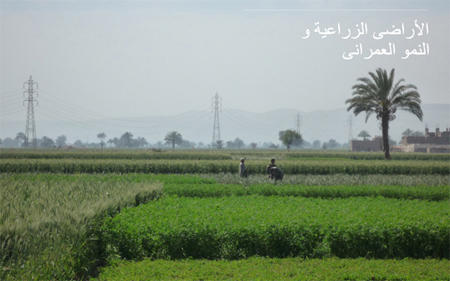Agriculture - Skin of the urban organism

Students: Esther Götz, Katharina Kiesbauer
Farming in Egypt is confined to less than 3% of the total land area, and 90% of which is concentrated in the Delta. Despite this lack of land, the highly fertile soil makes agriculture one of the most import economic sectors in Egypt. Agriculture has traditionally shaped and structured the Nile Valley. Today, under enormous population pressure this picture is changing and agricultural land is more and more threatened and occupied by the expansion of urban settlements.
In 1960 Egypt was self-sufficient in almost all of the basic food supplies, but today Egypt is already heavily reliant on food imports. The reason for this is simple: in this short period the population has exploded from 28 to over 80 million, while the amount of the available arable land has stayed more or less the same. Additionally scarcity of water for agricultural use has become a crucial issue, especially since the attempts to introduce large-scale state run agricultural production. The presence of state in agricultural sector was stronger in the period from 1950’s to 1970’s, while from 90’s onwards the practice has turned toward deregulation. Can we describe, on a chosen example, how have these changes affected the agricultural production – from the change in landownership or size of parcels to the changes in the type of production? What are the different forms of agriculture present within the research area (i.e. larger state run production and small-scale agriculture based on individual farming)?

